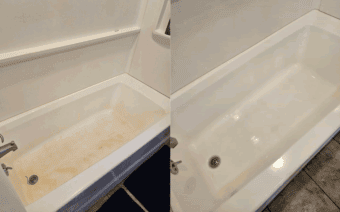
October 14, 2024
Many businesses rely on office supplies, as well as packaging and shipping supplies, for seamless operations.
Having the right amount of these supplies and the right quality is critical.
The question left is – how do you support varying supply needs while ensuring your budget isn’t converted into untouched sticky notes or a surplus of packaging tape?
Do you know how much you’re spending?
Regardless of your business’ size, reducing costs can enhance operational efficiency and boost profits.
Here are a few strategies you can put in place to make sure you’re not spending more than necessary.
Order supplies thoughtfully
It’s tempting to buy in bulk if that’s when discounts appear.
However, this can quickly eat away at your bottom line if the supplies aren’t being utilized or if they are being taken advantage of.
Purchasing supplies thoughtfully means you’re investing time into finding out which supplies are crucial to daily operations.
It also means you’re investing time into figuring out what kind of shipping options it takes to deliver said supplies.
For office supplies specifically, employee surveys are one way to determine internal office supply needs.
By collecting data on employees’ office supply needs, you’re facilitating an environment with open communication while learning more about how your employees complete their in-office work.
Be aware of alternative vendors
Chances are you didn’t randomly select your vendor, and you use them for good reason.
However, saving money with vendors that deliver supplies doesn’t necessarily mean severing ties with them.
Instead, a closer examination of how you allocate your funds to such vendors can help establish a financially symbiotic relationship.
For example, businesses often overlook the shipping and mailing rates associated with their ordered office supplies.
Though one can’t control the vendor that delivers their products, they can control which vendor they choose.
Choosing supplies based on their tacked-on shipping prices can reduce the total in the long run.
Though that might feel obvious, finding economical shipping solutions that don’t trade cost for convenience is a tedious, but must-do action.
Buy generic
In most cases, the differences between the name brand and the generic brand are slim.
It’s smart to bulk up on items that are the generic brand, especially for supplies that can be expensive, like ink cartridges, for example.
Generic ink cartridges designed for desktop inkjet and laser printers frequently come at a price that’s only half of what you’d pay for name-brand alternatives, yet they often exhibit negligible discrepancies, if any, in print quality.
Don’t confuse your shipping supplies
If you don’t understand your different “levels” of packaging and shipping supplies, it’s hard to optimize them.
You will need to order them all in different quantities, with different standards, at potentially different frequencies.
There are four levels of packaging and shipping supplies:
- Primary
- Secondary
- Tertiary
- Ancillary
This might sound complicated, but it all follows the supplies’ relationship to your product.
Primary supplies relate specifically to the product packaging.
It’s primary packaging if it comes in direct contact with the product.
Examples of primary packaging supplies include:
- Cans and tins
- Blister packs
- Glass bottles
- Plastic bottles
- Plastic wrappers
- Tubes
- Poly bags
- Vials
- Cardboard trays
Secondary packaging supplies include the materials necessary to group multiples of your product together in one container.
Usually, secondary packaging needs to be stackable for shelving and displays.
Examples of secondary packaging supplies include:
- Cardboard boxes and cases
- Paperboard trays
- Plastic boxes
- Shrink wrapped packages
Tertiary supplies refer to the materials needed to ship your product from the factory to the store or place where it’s being sold.
Tertiary shipping supplies include:
- Pallets/skids
- Shipping crates
- Large cardboard boxes
Lastly, ancillary supplies refer to all the additional materials needed to accompany your first three levels of packaging and shipping supplies.
This includes tape, film, labels, etc. – and it’s going to look different for every business.
Conclusion
A lot goes into packaging and shipping your product.
A lot goes around your product, too – specifically, four different kinds of supplies that all need to be considered, ordered through a vendor and kept track of to ensure you’re not overspending or under-receiving.
 Spinning up fun at Back to the Vinyl’s new location
Spinning up fun at Back to the Vinyl’s new location Jolly Good Soda – now that’s cool!
Jolly Good Soda – now that’s cool!








